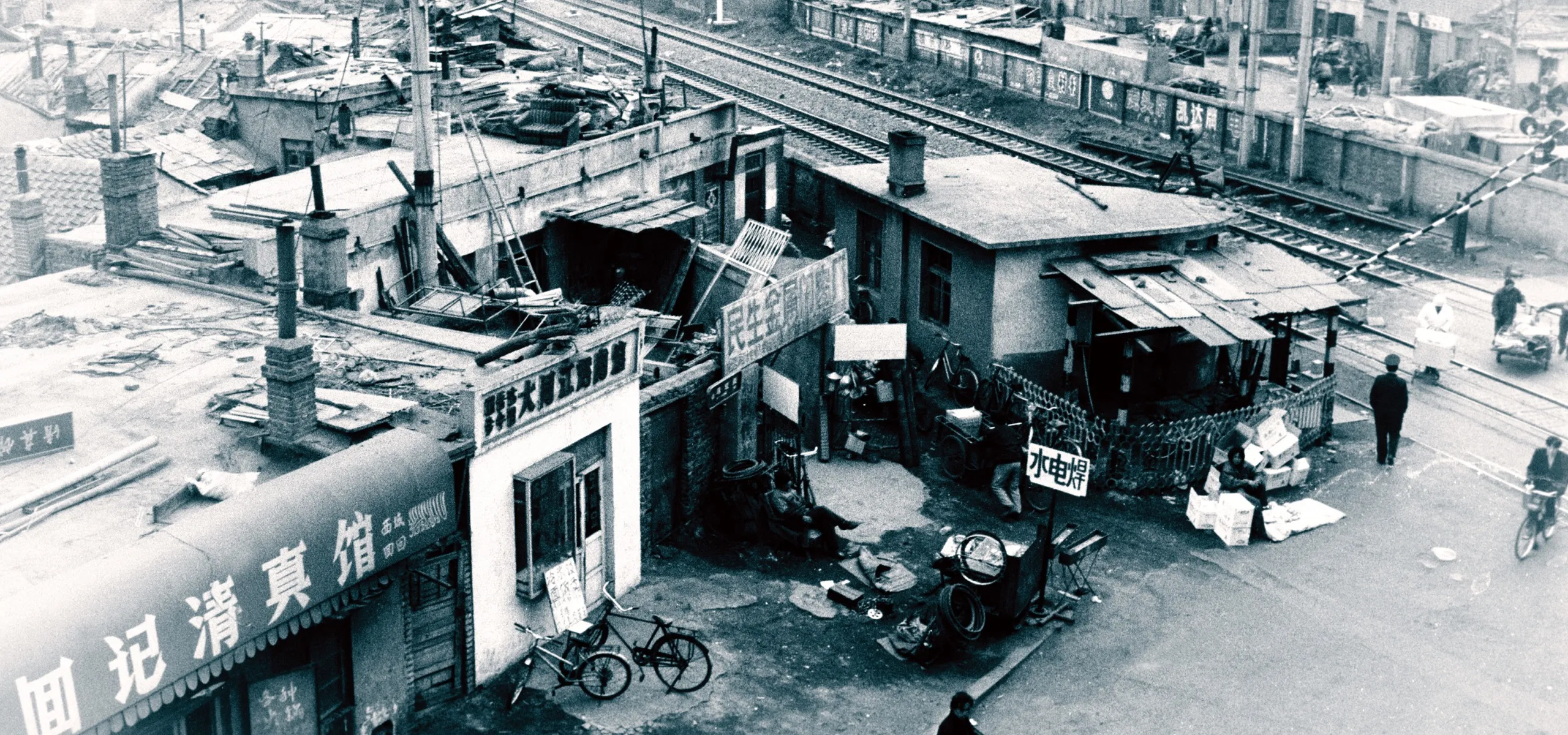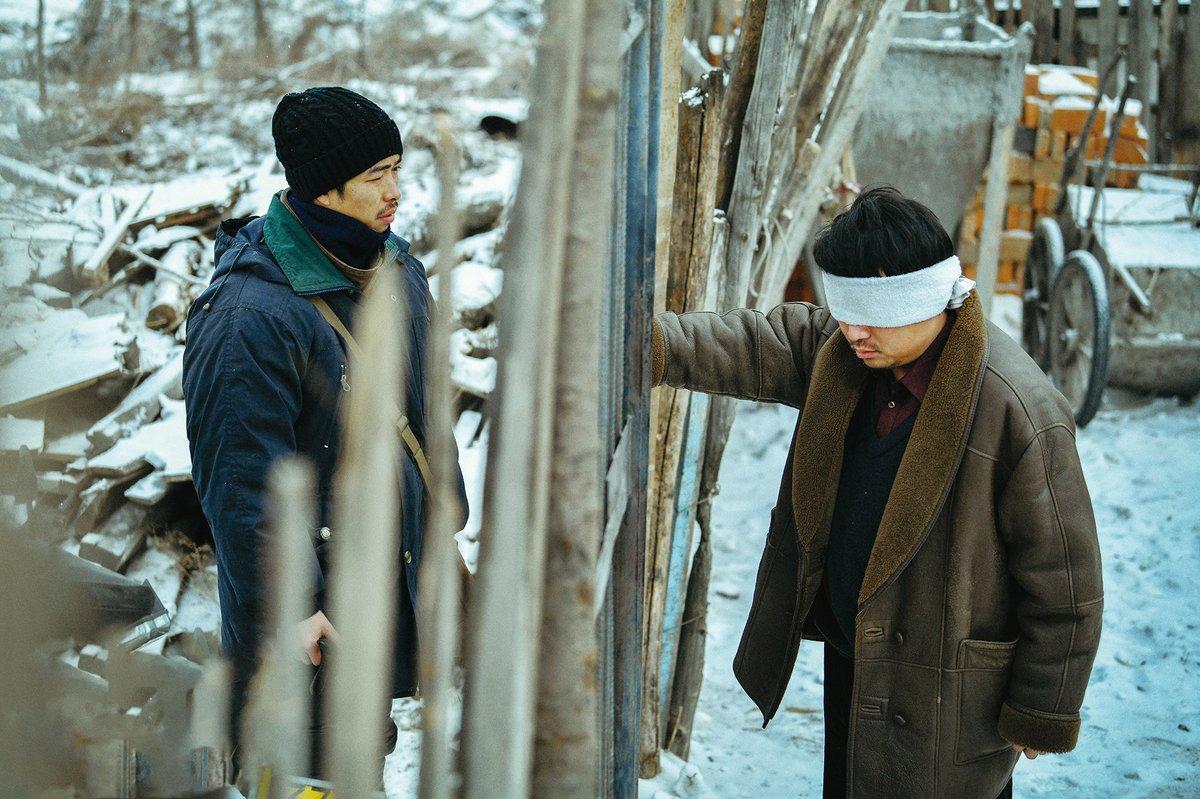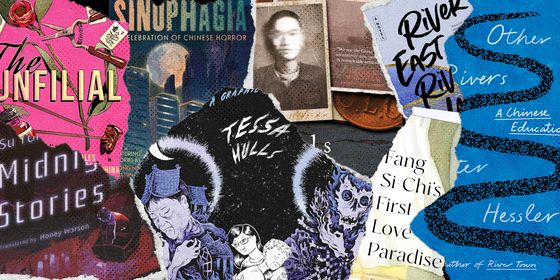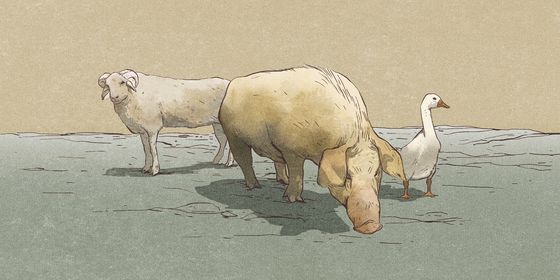Why is China’s Northeast such a fertile setting for film, music, and literature?
In 2019, a chance encounter in a dance hall spawned a song viewed by billions. That year singer-songwriter Liu Shuang met an elderly man in China’s northernmost city, Mohe, and decided to write a song based on the man’s tragic story: losing his wife in a fire in the 1980s, and returning alone to the old haunt where they used to dance together.
But Liu never expected “Mohe Ballroom” would go viral. With 2 billion views on Douyin (the Chinese version for TikTok) as of November 2021, the song became the latest icon of China’s “Northeastern Renaissance (东北文艺复兴),” a loose genre of literature, music, film, and TV shows set in China’s three northeastern provinces—Liaoning, Jilin, and Heilongjiang—collectively known as “Dongbei.”
The phrase was etched into the popular imagination in 2019, when Jilin-born singer Dong Baoshi used it on a comedy show to poke fun at the success of his song “Wild Wolf Disco.” In the following years, the “Northeast Renaissance” label has been applied to almost every successful work about Dongbei.
In some ways, the works categorized under the Northeast Renaissance are very different: from the gritty 2014 crime film Black Coal, Thin Ice, which explores a series of grisly murders, to the light-hearted TV series Country Love (2006), describing trifling matters in rural life. But there are some shared elements: freezing temperatures; abandoned industrial plants and factory towns; and an atmosphere of despair and stagnation, stemming from the job losses due to deindustrialization in the 1990s and the subsequent rise in crime, violence, and alcoholism.
These seem to have formed a fixed set of archetypes for all Northeastern narratives, whether they are played straight as in the noir-ish Black Coal; for irony, as in comedies like Country Love; or even for nostalgia like in “Mohe Ballroom” or the film Manchurian Tiger (2022) by Heilongjiang-born director Geng Jun, which are part of a more recent, self-aware generation of Dongbei-themed works that consciously play up well-known Dongbei tropes.
It isn’t clear why Dongbei in particular has attracted so much attention in literature, film, and art. Its past could be one clue. “The Northeast has experienced the transformation from prosperity to decline, which makes it a natural cradle for literature and art,” says Li Zhuang, a poet, novelist, and researcher at the China Writers Association. “Chinese people say, ‘Poets create the best works in suffering.’”
Dongbei’s glory days in the 1950s make the region’s subsequent slump look even bigger, and thus more tragic. The three northeastern provinces produced steel, coal, petrochemicals, and machinery for the whole nation. The region enjoyed respect as the birthplace of China’s industrial development. Skilled workers relocated there along with state industries, and enjoyed some of the best wages, food, job security, and educational and health resources in the country.
Film was one major industry that flourished in Dongbei. The Changchun Film Studio (CFS), founded in Jilin province in 1955, attracted some of the country’s best directors, actors, and film technicians to the region. Since the 1950s, the CFS has produced over 1,000 original feature films and 1,000 dubbed films, including the PRC’s first animated film A Sure Catch (1948), its first feature film Bridge (1949), and its first dubbed film Private Aleksandr Matrosov (1949).
But ironically, among all those films, you won’t find any plots typical of the “Dongbei movie” style. “When Dongbei was prosperous, they didn’t contribute works that could represent the Northeast,” says Li. “It is its decline, instead of its prosperity, that spawned a bloom of literature and art.”
The mass layoffs of the 1990s left millions unemployed. In 2002, director Wang Bing released one of the prototypical Dongbei films: West of the Tracks, a nine-hour documentary (released in three parts) which explores the decay of the industrial Tiexi district of Shenyang, the capital of Liaoning, through the routine lives of soon-to-be laid-off workers and their families. The film won several international awards including at the Marseille International Film Festival, and was influential in the movie business, though it wasn’t publicly shown in China.
Cheng Rui, a movie producer who co-produced the documentary Four Springs (2019), called the film powerful and shocking. “In the past, when you mentioned the Northeast, you thought about its glory and success,” she told TWOC, calling West of the Tracks “the first time a film displayed Dongbei’s huge transformation.”
The success of this “misery” narrative inspired many other film creators to tell Dongbei stories set in the post-layoff era. Some have been incredibly well-received. The Piano in a Factory (2011) has a score of 8.5 out of 10 on China’s hard-to-please user-review platform Douban. Focusing on a laid-off steel worker who tries to make a piano for his daughter using the scrap metal he and his former coworkers scavenge from their old factory, the story reflects on laid-off workers’ economic hardships, as well as the strong bonds of community and solidarity that remained.
Black Coal, Thin Ice won the coveted Golden Bear Award at the 64th Berlin International Film Festival in 2014, sparking a trend for setting crime films and TV dramas in Dongbei’s bleak, gritty surroundings—“Northeast noir” as it were. Meanwhile Manchurian Tiger, a black comedy following the lives of several ordinary people at the bottom of society, won the Best Feature award at the 24th Shanghai International Film Festival in 2021.
Cheng notes that most Dongbei films have a distinctive look: a series of long shots that give center stage to massive abandoned factories, derelict landscapes, and endless snow to create a “harsh, cold and intense atmosphere.” “Maybe when you try to tell a story about Dongbei, you just can’t avoid these elements,” she muses.
Critics often say that Northeast-themed films have three genres: comedy, crime, and misery. But Li believes they are inherently connected and all come from the lived experiences of Dongbei residents. “Crime and misery are a reflection of reality, while comedy is the deconstruction of that reality,” he says.
That’s not to say Dongbei was the only region in China where economic decline was a fact of life in the 1990s, but most layoff-themed movies seem to be set there. “It’s actually a collective memory of the whole nation about a certain period of history,” says Cheng, who notes that the Northeast nevertheless stood out because it was hit the hardest. “Maybe that’s why Dongbei movies resonate with people beyond the Northeast.”
The popularity of the Northeastern dialect also helps, boosted by years of Dongbei comedians doing stand-up routines and sketches at the annual Spring Festival Gala by state broadcaster CCTV. Li believes it “made the whole nation familiar with Northeastern styles of expression.” Notably, Black Coal and “Mohe Ballroom” had creators that do not hail from the region—director Diao Yinan is from Shaanxi, and Liu grew up in Xinjiang—indicating that some Dongbei tropes are well-known enough to be imitated by those with no direct experience of the area’s history.
One of the Northeast’s most influential comedians, Zhao Benshan, got his start on the CCTV Gala in 1990, and has gone on to found an influential production company and theater promoting Northeastern arts such as errenzhuan, as well as act in and direct his own movies. China’s comedy and film sectors are still littered with Zhao’s proteges and their works have cemented many Dongbei archetypes, such as the dialect and certain personas, in the popular imagination.
Another important feeder of Dongbei films is the distinctive literary style developed by writers from the area, called “the New Northeastern Writer Group” by critics. In the late 2010s a group of Northeastern novelists, all born after 1980, rose to fame. Their main representatives—Ban Yu, Zheng Zhi, and Shuang Xuetao—were all born in Shenyang’s Tiexi district, all grew up in the post-layoff era, and all wrote about the region’s working class.
Shuang, the only writer of the group so far to be translated into English (his anthology Rouge Street came out earlier this year with Macmillan), was born in 1983, and witnessed firsthand how the social transformation of the 80s and 90s brutally changed people’s lives. After his parents were laid off from their factory jobs, Shuang’s family had to move to the run-down Yanfen Street, a place which frequently appears in Shuang’s novellas like “Moses on the Plain.”
In Shuang’s memory, his neighbors were “thieves, swindlers, alcoholics, gamblers,” and other dubious ne’er-do-wells. But in his work, which features many laid-off workers or their families, there is not just chaos, struggle, loss, and pain, but also romance, kindness, and poetic flavors. “Yanfen Street is pure white in my heart, though it might be actually pretty dirty,” Shuang told Sanlian Lifeweek magazine in 2019.
When “Moses on the Plain” was adapted into a film—Fire on the Plain—in 2020 (though it has not yet been released domestically), the distinctive strands of the Northeastern Renaissance were laid on thick. “Mohe Ballroom” was selected as its promotional song, and Diao, the director of Black Coal, was a producer.
There are more adaptations in the pipeline. Shuang’s The Aviator, Ban’s A Happy Excursion, and Zheng’s Xianzheng are all slated for future film adaptations.
But Li is not very optimistic about the future of Dongbei narratives, saying they have become “milder” in the past few years, adding more nostalgic elements while losing the coldness and bite that originally made them pluck at the nation’s heartstrings.
“As these writers are gradually trying to broaden their writing themes, the Dongbei narrative will unavoidably merge with mainstream narratives,” Li predicts. “When this generation of creators become old or even die, when the memories of the 90s fade, stories about the Northeast will no longer be distinctive.”
Rustbelt Renaissance: China’s Post-Industrial Northeast Rises Again in Film is a story from our issue, “Public Affairs.” To read the entire issue, become a subscriber and receive the full magazine.














